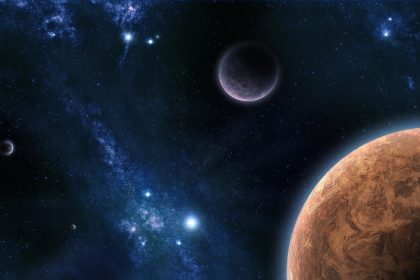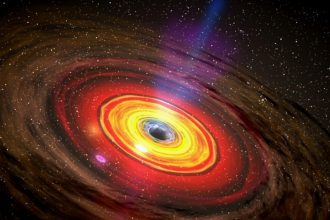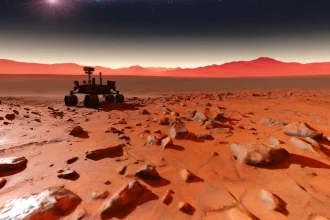New Pulsar Technique Maps Dark Matter Distribution in Milky Way
New technique uses solitary pulsars to map dark matter in the Milky Way. Includes effects of galaxy wobble caused by…
NASA’s Lucy Spacecraft Images Upcoming Asteroid Flyby
Lucy spacecraft images asteroid Donaldjohanson on April 20th. The mission tests navigation while studying Solar System origins. Unexpected discoveries highlight…
Mars’ Young Northern Ice Cap Reveals Cold, Stiff Mantle
Mars' northern ice cap is estimated to be 2-12 million years old. The ice causes minimal surface deformation, indicating a…
Star T Coronae Borealis Poised for 2025 Brightening
T CrB's outburst delayed to 2025. Binary system observed by advanced telescopes. Opportunities for both amateurs and professionals.
NASA’s Perseverance Explores Ancient Martian Rocks in Jezero Crater
Perseverance analyzes ancient rocks in Jezero Crater. Findings suggest past water activity on Mars. Study aids future Mars exploration missions.
Zhurong Rover Discovers Ancient Mars Shorelines
Zhurong found shoreline-like structures on Mars. Findings suggest Mars once had ice-free oceans. Data enhances understanding of Mars' potential for…
Asteroid 2024 YR4’s Impact Risk Sharply Decreases
Asteroid 2024 YR4's impact chance decreased to 0.001%. Detection by ATLAS enabled timely monitoring and risk assessment. Enhanced planetary defense…
Scientists Discover Mechanism Behind Magnetar Magnetic Fields
Magnetars are neutron stars with extremely strong magnetic fields. The Tayler–Spruit dynamo explains magnetic field generation in low-field magnetars. Research…
New Study Reveals Ferrihydrite as Cause of Mars’ Red Hue
Ferrihydrite likely causes Mars' red color. Research utilizes multiple Mars mission data sources. Future rover samples will verify these discoveries.
New Laser Aims to Detect Mars’ Ancient Microbial Fossils
New laser technology targets fossil microbes on Mars. Built on successful Earth-based gypsum studies. Integration with future rover missions planned.





















